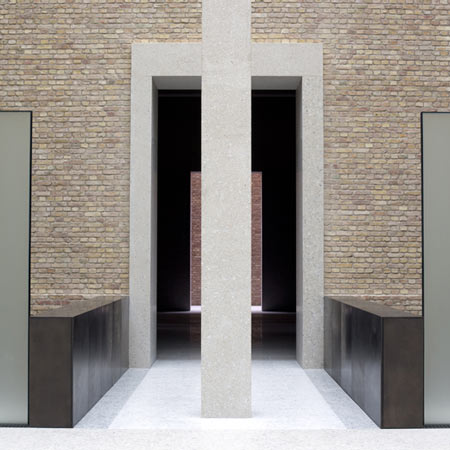
Neues Museum by David Chipperfield Architects and Julian Harrap Architects
David Chipperfield Architects and Julian Harrap Architects have completed the renovation of the Neues Museum in Berlin, Germany.
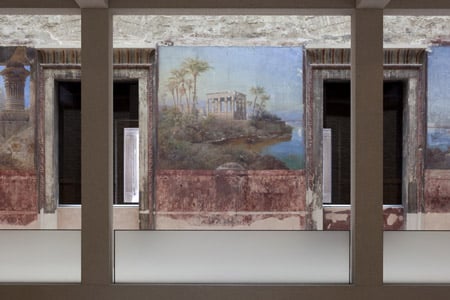
The 20,500 square metre building is due to open to the public in October this year and will house Egyptian artifacts.
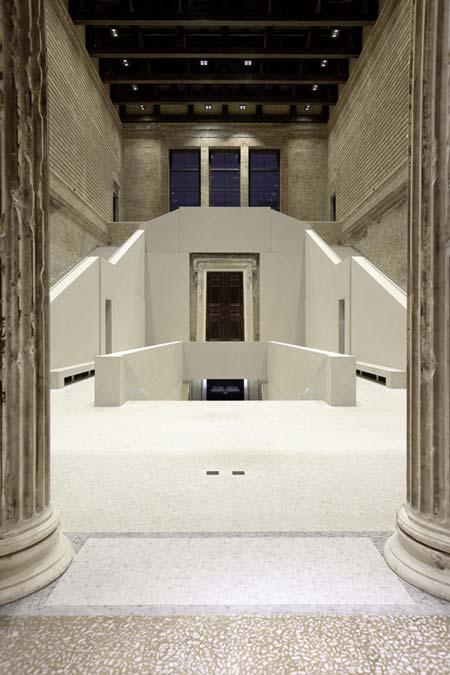
Located on Museum Island, the museum was originally completed in 1849 but was bombed during the Second World War and has lain derelict since.
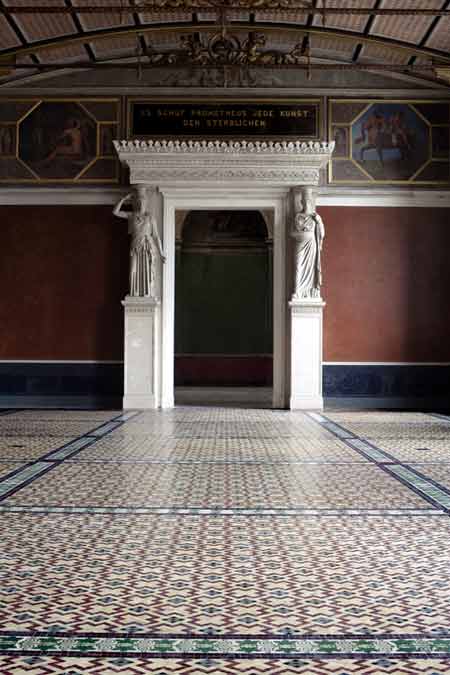
"Given this evocative yet inaccessible space, the restoration of the Neues Museum follows a principle of conservation rather than reconstruction," explain David Chipperfield Architects, who were commissioned to masterplan the area twelve years ago.
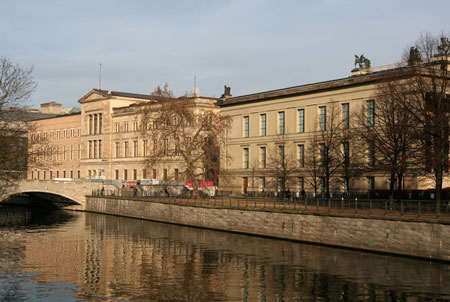
A ceremony to celebrate completion of the renovation will be held tomorrow.
Photographs by Ute Zscharnt.
Here's some more information from David Chipperfield Architects:
--
Fredrich August Stueler’s 1859 Neues Museum, located on Museum Island in the heart of the former East Berlin, was initially constructed to extend the space of the Altes Museum, built immediately to the south by Stueler’s teacher, Karl Fredrich Schinkel.
The original design had formed part of an overall architectural concept for Museum Island – prompted by Fredrich Wilhelm IV – of a series of art and archaeological museums styled so as to promote a greater appreciation of classical antiquity.
Among these museums, and in terms of its construction and rich interior decoration, the Neues Museum was considered the most important monumental Prussian building of its era.
Seen today alongside the four other reconstructed museum buildings on the island, Stueler’s Neues Museum is the only structure still ruined from the war – a contrast that demonstrates ideas of history and decay in a compelling and powerful way, although throughout the building the degree of destruction varies greatly.
Certain interiors have survived almost completely, with elaborate finishes and ceiling frescoes still intact, while other building elements exist only as the enclosures of a gaping void. The power of the ruin not least stems from this exposed brickwork shell, investing the building, 150 years after it was first imagined, with the indelible presence of a picturesque classical ruin.
Given this evocative yet inaccessible space, the restoration of the Neues Museum follows a principle of conservation rather than reconstruction – the design gives back only enough context so that the significance of the whole structure and the sequence of spaces contained within it are legible.
Accordingly, the missing north west wing and south east bay are rebuilt, the enfilade of rooms is restored, and the stair and courtyard spaces are designed so as to maintain elements of the building’s own decay. In this way, the new Neues Museum and its collection of Egyptian antiquities should navigate carefully between de-historicised reconstruction and monumentalised preservation.
Rebuilding of the Neues Museum on Berlin’s Museum Island completed
On March 5th, after more than ten years of intensive work, the completion of the rebuilt Neues Museum on Berlin’s Museum Island will be celebrated in an official ceremony.
Built between 1841 and 1859 by the architect Friedrich August Stüler, extensive bombing during the Second World War left the building in ruins, with entire sections missing completely and others severely damaged. Few attempts at repair were made after the war, and the structure was left exposed to nature. In 1997, David Chipperfield Architects - with Julian Harrap - won the international competition for the rebuilding of the Neues Museum.
The key aim of the project was to recomplete the original volume, and encompassed the repair and restoration of the parts that remained after the destruction of the Second World War. The original sequence of rooms was restored with new building sections that create continuity with the existing structure. The archaeological restoration followed the guidelines of the Charter of Venice, respecting the historical structure in its different states of preservation. All the gaps in the existing structure were filled in without competing with the existing structure in terms of brightness and surface. The restoration and repair of the existing is driven by the idea that the original structure should be emphasized in its spatial context and original materiality - the new reflects the lost without imitating it.
The new exhibition rooms are built of large format pre-fabricated concrete elements consisting of white cement mixed with Saxonian marble chips. Formed from the same concrete elements, the new main staircase repeats the original without replicating it, and sits within a majestic hall that is preserved only as a brick volume, devoid of its original ornamentation.
Other new volumes – the Northwest wing, with the Egyptian court and the Apollo risalit, the apse in the Greek courtyard, and the South Dome – are built of recycled handmade bricks, complementing the preserved sections. With the reinstatement and completion of the mostly preserved colonnade at the Eastern and Southern side of the Neues Museum, the pre-war urban situation is re-established to the East. A new building, the James Simon Gallery, will be constructed between the Neues Museum and the Spree, echoing the urban situation of the site pre-1938.
In October 2009, after more than 60 years in ruin, the Neues Museum will reopen to the public as the third restored building on Museum Island, exhibiting the collections of the Egyptian Museum and the Museum of Pre- and Early History. In the interim period, vitrines, pedestals and plinths designed by Michele de Lucchi will be installed.
"The handing over of the Neues Museum represents an important moment in the process of bringing the Museum which was destroyed during the Second World War back into the public life of the city," says David Chipperfield. "We can finally show the results of eleven years of planning and intense collaboration with the Stiftung Preußischer Kulturbesitz, the Staatlichen Museen zu Berlin, the Bundesamt für Bauwesen und Raumordnung and the Landesdenkmalamt Berlin and we believe this effort is now visible for all to see."